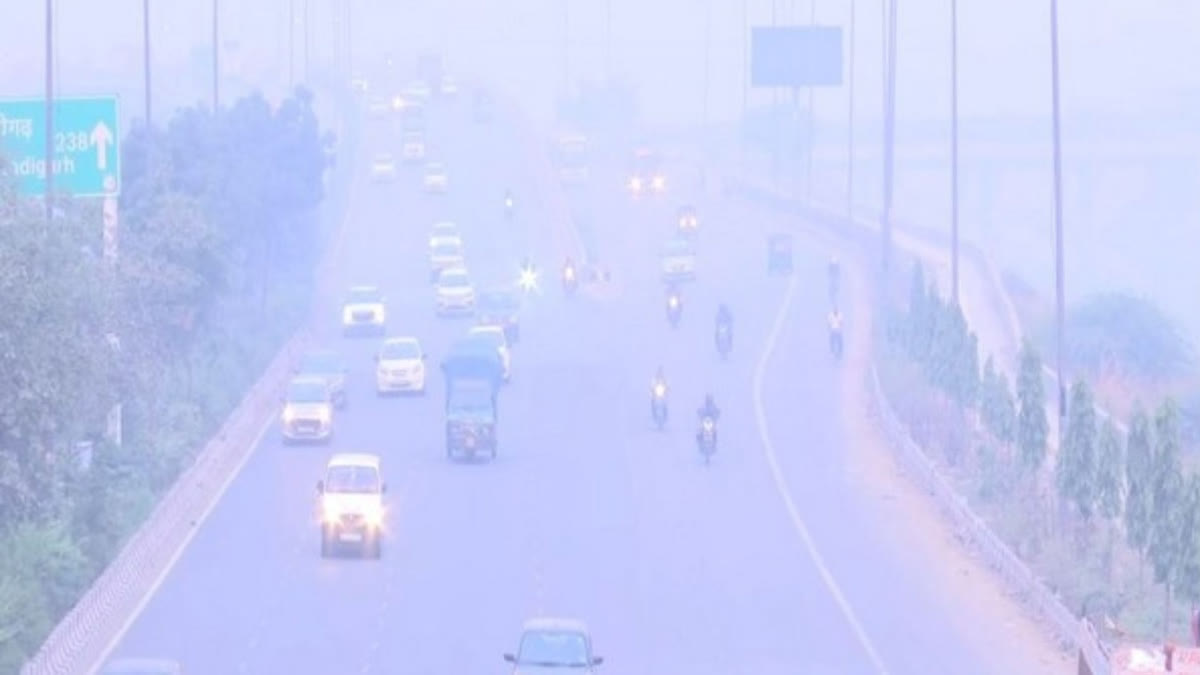New Delhi/Hyderabad: Air pollution in New Delhi made headlines once again as everyone in the national capital - from politicians in Lutyens' Delhi to bureaucrats to the common man, every section of the society of affected. Such was the impact of the air pollution that the Supreme Court observed that endeavour should be made so that next winter is a little better and stressed that stubble burning, which is one of the main causes of air pollution in Delhi-National Capital Region year after year, must stop and directed concerned state governments to take steps to curb pollution.
As per the 2023 study of the Air Quality Life Index (AQLI), Delhi has been recorded as the most polluted city in the world. The national capital has consistently been in the hazardous category at various locations with clusters of red dots spread across the Indo-Gangetic plains. As per the Central Pollution Control Board data, Delhi’s Air Quality Index (AQI) increased above 200 points since October 27. The worsened air quality was reported on November 3, 2023, beating the previous high of 471 recorded on November 12, 2021.
- The National Capital’s air woes
Experts observed the two biggest factors contributing to Delhi’s critical air: construction activity and transport. Meanwhile, in 2021, the Supreme Court declared that stubble burning by farmers in the surrounding states was not the only cause of the capital's air pollution. Rather, urban factors like construction activities, industrial emissions, and vehicular pollution were the major causes. Experts pointed out that old vehicles release 4.3 percent of all particulate matter (PM) in Delhi. A BS-I diesel car (pre-2000) emits 31 times more PM than a BS-VI diesel vehicle. Construction and demolition have been another cause of harmful pollutants in the capital's atmosphere. However, open garbage burning at landfills and in neighborhoods stood in the third position to Delhi’s air woes.
- The way out of the adversity
As per the experts, there are some long-term ways of cutting down pollution levels that include imposing a ceiling on particular vehicles per household, controlling diesel vehicle registration, using CNG engines for public transport and phasing out old commercial vehicles, restricting and regulating construction activities, garbage management, and banning smoke generating fireworks in all social occasion. The most important causes of air pollution in Delhi are the increasing population and related developmental activities at the cost of environmental damage.
During the winter months, the large-scale stubble burning practiced in Punjab, Haryana, and Rajasthan caused a thick layer of smog to cover the Delhi-National Capital (NCR) region. As per research, crop burning has released about 149 million tonnes of carbon dioxide and over nine million tonnes of carbon monoxide. On the other hand, firecrackers also contribute to the perennial problem.
- Steps taken to control Air pollution:
Various steps have been taken by the Centre and state governments to tackle the menace of air pollution. Primarily, the Delhi government introduced a policy to preserve and plant trees in a bid to increase the green cover and have carbon sinks. Anti-smog guns and smog towers have been also installed in the city. Prevention of stubble burning is also a key component of reducing air pollution. The subsidy is provided to the farmers for procuring the Turbo Happy Seeder, which is a machine fitted on tractors that can cut and uproot stubble and eliminate the need to burn stubble. The Supreme Court urged the Centre and states to adopt a 'carrot and stick' policy in persuading the farmers to abjure the practice and switch to other crops. The SC also looked forward to the Delhi government taking a call on the odd-even curbs on vehicles, even if it stands skeptical about its effectiveness. The Delhi government advised Delhiites to avoid going outside in the early morning and for late evening walks, jogging, running, and physical exercise during poor AQI. - Supreme Court observations
A bench comprising Justices Sanjay Kishan Kaul and Sudhanshu Dhulia during a hearing earlier this year stressed the need for judicial monitoring to ensure people do not face the same scenario every winter. “Let us at least make an endeavour for the next winter to be a little better,” said the bench.
Let us hope that 2024 will be a better year for Delhi residents.
Read more:
- 2023 Year-ender: After Chandrayaan-3 success, India's maiden solar mission Aditya L-1 launched
- Year-ender 2023: How the India-Middle East-Europe Economic Corridor will be a game-changing affair
- Year-ender 2023 | COP28: Why India will be satisfied with outcome document
- Year-ender 2023: What is future of Russia's lunar mission after its Luna 25 spacecraft crashes
- Year-ender 2023: Sinking Joshimath hill town remains a ticking time bomb
- Year-ender 2023: Cricket cruised in fifth gear as India suffered yearend heartbreak
- Year-ender 2023: Revisiting year's deadliest triple train tragedy in Odisha’s Balasore



